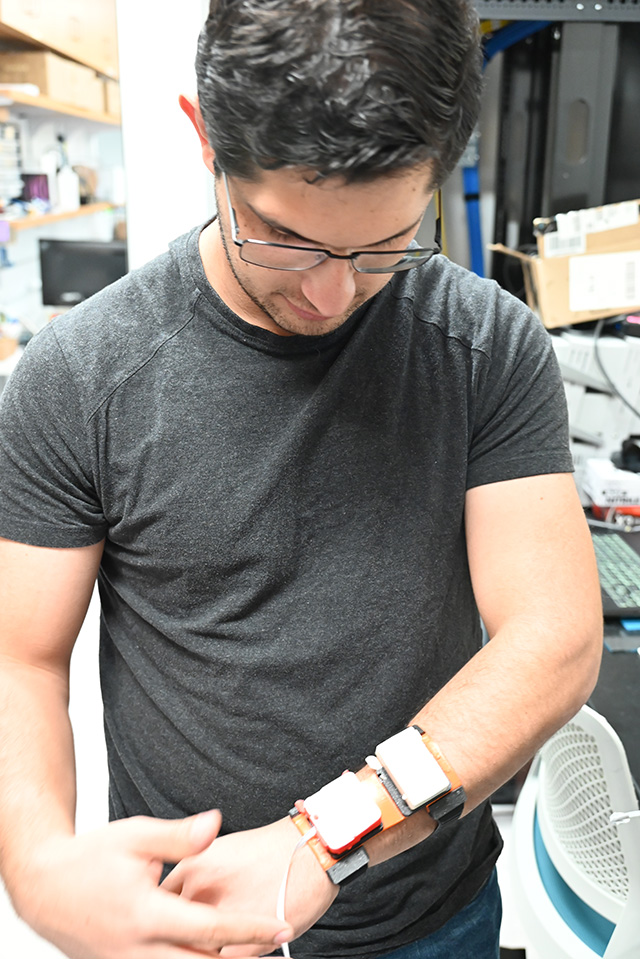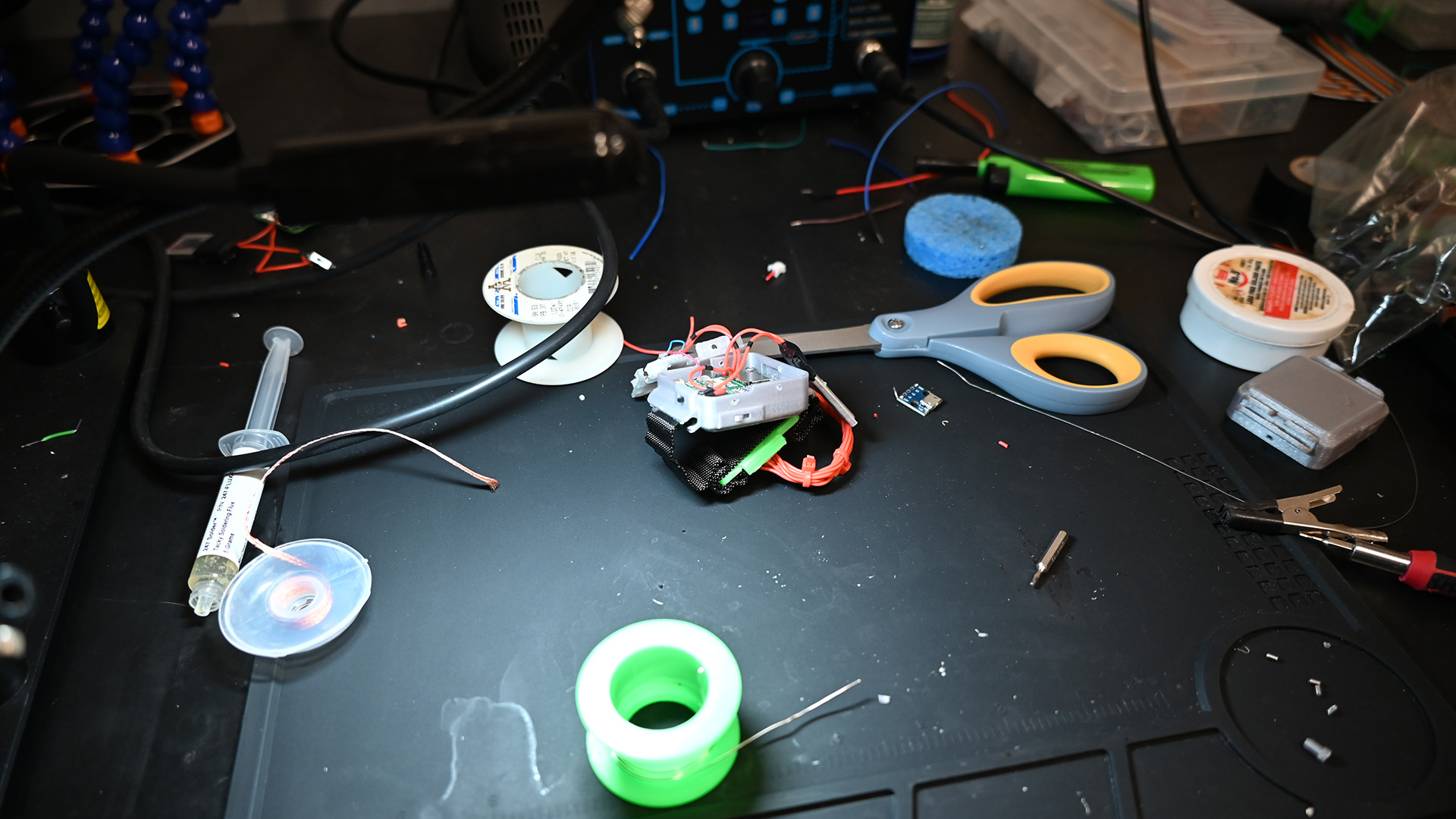One Saint ŔË»¨Ö±˛Ą University lab is developing new touch-based technologies in collaboration with the DeafBlind community, exploring how a simple tap can transform how we all communicate.
That tapping you may notice in Saint ŔË»¨Ö±˛Ą University’s Interdisciplinary Science and Engineering Building is probably coming from . The CHROME Lab brings together faculty and student researchers to study haptics — that is, the science and technology of touch.
“In the lab, we’re very interested in understanding how to raise the touch channel as a primary mode of communication,” said Jenna Gorlewicz, Ph.D., associate professor of mechanical engineering and director of the CHROME Lab. “Where better to do that than from experts in touch themselves, like the DeafBlind community?”
Protactile language is a touch-based form of communication consisting of intentional taps, presses and other touch interactions that the DeafBlind community created. Protactile is an incredibly rich language, something that could never be captured via technology. It's all about being "in touch" with one another. In a time when so many users are visually taxed from staring at screens and attending virtual meetings, unlocking the potential of touch could be transformative for all users.

“Insights about communicating through touch are much bigger than any one community. It's an innate human capacity,” said Gorlewicz, who is also the associate dean for research and innovation in SLU’s School of Science and Engineering and a fellow with the SLU ŔË»¨Ö±˛Ą Institute. “Imagine being on Zoom with 100 people. It’s hard to read the room. What could information conveyed via touch do to support that?”
The CHROME Lab is collaborating with researchers at Gallaudet University and the DeafBlind community on developing wearable devices — a little bigger than watches — that send touch-based signals. The purpose of the project is to support fundamental research in linguistics by understanding how deafblind children make sense of touch cues. Gorlewicz said there is an array of possible applications for this technology, from navigation — drivers could receive directions through touch-based cues rather than dividing their attention between the road and their dashboard — to remote communication, allowing for less visual overload in virtual meetings.
The project is supported by a $2.5 million grant from the National Institutes of Health (NIH) to Gallaudet University, of which SLU has a sub-award to develop wearable, touch-based technologies for the study.
Nicolas Prudencio is a graduate student in SLU’s School of Science and Engineering studying mechanical engineering. With mentorship from Gorlewicz, he is designing and developing these wearable technologies. Prudencio’s role is to understand how the different electronic components of the devices relate to one another and to bring them together in a functioning device.

Prudencio is using 3D printing to design the external housing for these devices.
“The cool part of that is we can iterate very fast,” said Prudencio. “We can design it and print it, and in a few hours, we can know if it’s going to work or not.”
Prudencio is working with big components first so that he can more easily modify them, but once the design is finalized, he will need to reduce the size of the device to something a small child can comfortably wear and use.
Prudencio said the experience of working on the project is invaluable as it allows him to test the concepts and theories he’s learned in the classroom. But he also believes it is vital for engineers to work alongside people from different backgrounds in developing new technologies. This extends to the undergraduate researchers Prudencio helps mentor as well, who work side-by-side with him on projects like this.
“I can build something that is amazing from my perspective but that will be completely useless if it doesn’t work for other people,” said Prudencio. This is one reason why he said of the deafblind individuals at the center of the project: “I think they’re doing more for me than I am doing for them.”
Before coming to SLU, Prudencio earned a bachelor’s degree in electromechanical engineering in his home country of Bolivia. As he reflected on his experience of coming to the United States, Prudencio expressed gratitude for the mentorship from Gorlewicz and the sense of belonging he’s found in the CHROME Lab.
“In my experience working back home, your boss is going to tell you what to do and how to do it, and you’re limited to doing what they say. Here, Jenna is a mentor. She’s very supportive, and she gives you many opportunities. If you think there’s another way to do something, she encourages you to do it,” said Prudencio.
“It was good when I came to St. ŔË»¨Ö±˛Ą and Saint ŔË»¨Ö±˛Ą University, but I think it was even better when I joined the CHROME Lab. I really like working in the lab. This is a place where I feel at home," said Prudencio.
Story by Kevin Lynch, senior communications manager in the Office of the Vice President for ŔË»¨Ö±˛Ą.
This piece was written for the 2023 SLU ŔË»¨Ö±˛Ą Institute Annual Impact Report. The Impact Report is printed each spring to celebrate the successes of our researchers from the previous year and share the story of SLU's rise as a preeminent Jesuit research university. More information can be found here.

